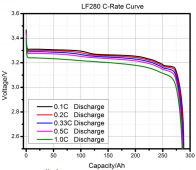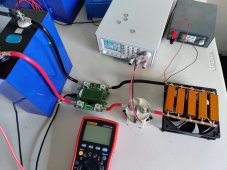If you can account for contact resistance, which is the issue of course.
Meaning that the AC-based impedance measurement is less impacted by contact resistance, or am I not understanding correctly?
The orion BMS on my vans pack shows about 0.2 mOhm for each 2P cell group. This is after I compensated for the bus bars, which was just a matter of running a known current through the pack and measuring the drop across each bus bar.
So you can measure IR using the dV / dI technique at the battery level - hadn’t thought of that.
That gives you a measure of average internal resistance but I suppose with measurements at individual busbars, it can all be figured out.
I believe so. However at 100% SOC the resistance will spike, so the max DI is limited. Obviously a mid SOC would be required in this case.
I just measured in the cell I am charging at 10.2A and I measure 1mV difference from 1 end of the busbar to the other, meaning 0.098 +/- 0.49 mOhms per busbar (obviously would be better to measure at higher current with my DMM).
From busbar to stainless bolt I get another 1 mV and from the combo of far end of busbar to nut I get 2mV (meaning 0.147 to 0.245 mOhms through busbar and into bolt and I read 0mV from bolt to terminal and 2mV from the far side of the busbar to the terminal, meaning the same 0.147 to 0.245 from busbar and into aluminum.
So now if I subtract the busbar + bolt resistance from the 0.47 mOhms I measured using dV / dI directly on the terminals, I get
0.473 +/- 0.0473 mOhms
- 0.196 +/- 0.049 mOhms
= 0.277 +/- 0.0963 mOhms
So I’m getting pretty close to the specification and should be precise enough to measure IR of individual cells for purposes of relative comparison (though being able to drain or charge higher currents would be nice).




